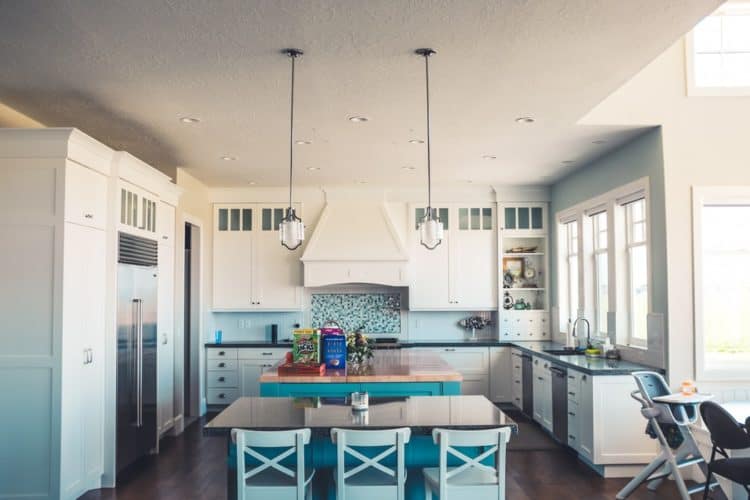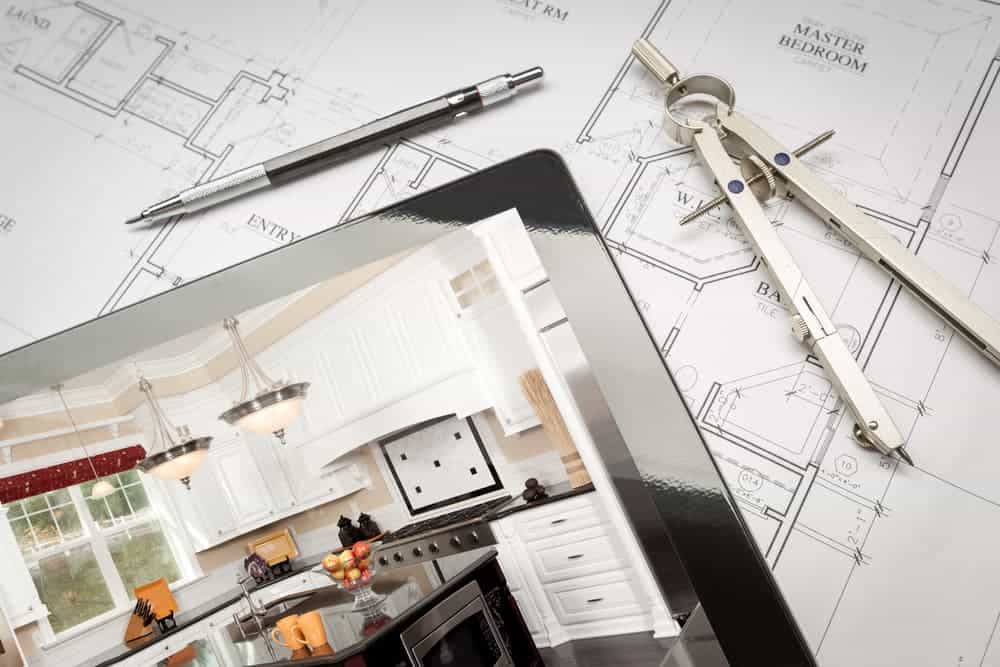
Opening Up a Kitchen to a Dining Room
Open kitchens, also called ‘open-concept’, can do wonders to transform your home. And while there are a wide variety of ways to design and execute an open-concept floor plan, perhaps the most popular route is opening up this space to a dining room.
But before you reach out to your kitchen remodelers in San Diego, read on. Below, we’re offering you an in-depth guide for opening up a wall between the kitchen and dining room, as well as an overview of the benefits of making this move.
Should you open the kitchen to the dining room?
Open-concept plans have become wildly popular in recent years, and it’s no wonder why: they do an excellent job at creating more space, improving functionality and flow, and overall enhancing and modernizing the aesthetic of any home. When it comes to which room to open up your cooking area to, the dining room stands as the most popular choice. Here are some reasons why:
1. Modern look & functionality
In the mid-1900s, open-concept homes did not exist. Instead, homeowners and designers opted for multi-roomed homes, where each room had its own specific function. But as time went on and technology improved, designers realized how much more effective the use of space could be in open-concept plans. That’s how open-concept kitchens first came to be.
Today, this layout is used to instantly modernize homes and improve the functionality of their spaces. If you’re interested in a cost-effective solution, you could renovate your existing kitchen by opening it up, though many homeowners also choose to add to their homes instead. Either way, opening up the walls that surround this room and allowing the space to expand beyond it makes the space feel more spacious without the cost of adding more square footage to your home.
2. Better for families
Another reason why more and more homeowners are opening up their cooking areas into dining rooms is the family-friendly factor. Without walls and obstructions between the kitchen and the dining room, parents have a much more kid-friendly sightline. With this layout, mom and dad can more easily keep an eye on kids while preparing meals.
3. Better for entertaining large groups
For a similar reason, this is also a great option for homeowners who enjoy entertaining. From dinners and parties to informal gatherings with friends, open-concept floor plans like this work well with conversation.
There are no awkward walls and doorways to block the view of other family members or guests present, and the open concept facilitates easier traffic patterns with large groups as well. Not to mention, many open-concept kitchens include islands or bar-style countertops, which are great for appetizers and buffet-style dining.
4. Less formal dining space
If you don’t necessarily love the idea of a formal dining space, then this open-concept room combo may be perfect for you. It’s actually a common reason that many homeowners choose this option! With the dining area unseparated by walls and easily accessible, it may become easier for families to get together and share a meal.
5. Purely aesthetic reasons
Perhaps one of the top reasons that homeowners choose this specific open floor plan is its pure aesthetic value. Kitchens open to dining rooms, if designed and crafted well, usually look stunning. Plus, many popular design trends work especially well with this type of layout. For example, exposed shelving and glass cabinets boost visual openness, which can help make the space feel even more spacious.

How to open up a kitchen to the dining room?
Although it’s one of the more common options for open-concept designs, deciding to open up a kitchen to a dining room still presents its own unique set of challenges. Here are some of our top tips for this remodel:
1. Direct traffic away from work areas
One common problem of small culinary areas is that they often have too many circulation routes. This can disrupt the primary activity areas, such as the sink, stovetop, and dishwasher. Meanwhile, dining rooms remain underused.
When you combine cooking and dining areas into one spacious family room, you get a much more efficient space for families. Plus, this helps direct traffic away from those activity areas we mentioned, which maximizes efficiency.
2. Make the new design functional
Yes, looks are important, but if this remodel that you’ve invested a lot of time and money into doesn’t improve the functionality of the space, you will regret it. Your remodeled space needs to feature a proper, working, practical culinary area.
Good architectural design solves functional requirements first and aesthetics second. A good working floor plan allows you to live in your house with ease and comfort.
3. Consider the transition zone
There is more than one way to plan the actual opening from the cooking area to the adjoining space. When you remove a wall, you’ll get a lot of usable space where it once stood. You can emphasize this transition zone with a design element such as an arch, a defining light fixture, or even a change in ceiling height.
Often, these help define these somewhat separate areas within one open space as well as an island or a peninsula. And if you’d like to have a concrete separating element but find those too bulky, a half-wall is a great choice that doesn’t take up as much space.
4. Use cohesive design elements
Since you’re combining two rooms that were once separate, it’s hard to keep them completely design-independent of each other. The best designers will tell you to pick a few cohesive elements and integrate them in all spaces now connected by your open floor plan.
For example, similar colored trimmings or accent colors throughout will create a connected aesthetic and prevent rooms from competing with each other.
5. Define space without walls
Part of what makes linking the kitchen and dining spaces feel natural is that their individual rooms remain defined but open to one another. All great designers will emphasize that good design does not need walls to define space, and this can be tastefully done in any home no matter its age.
There are many ways to define separate spaces without using walls. Some of the most popular examples are wing walls, enlarged openings with pilasters and entablatures, columns, dropped ceilings, and more. In addition, changes in floor materials are another useful way to define space.
6. Integrate more natural light
When planning your open-concept kitchen design, take advantage of exterior walls by adding windows and doors to introduce more daylight into this space. If you add windows or, even better, French doors, you could see the landscaping from the inside too.
Not only will this make the space feel bigger, but it’s also a great way to bring the outdoors inside. Corner windows can be particularly effective for opening up the view, but even if there’s no view, they can noticeably brighten the space and introduce an airy feel to any room.
7. Streamline the entire area
Remodeling to get an open-concept plan should be a process of simplification. If there are any elements or functions in this space that aren’t directly related to preparing or eating meals, you should try to relocate them elsewhere.
For example, many older homes have a pathway or closet space between the kitchen and the backyard. Instead, you could use this space for a laundry. Also, you should see to eliminate, relocate, and group any doorways that disrupt circulation. Here’s a great rule of thumb to follow: Rooms that aren’t related to the kitchen shouldn’t connect to it either.
8. Don’t do it all by yourself
Everyone loves a good DIY project, but don’t make this one of them. A remodel is a tough job even if you’re lightly updating a single room, and now you’re working with two specialized rooms at once. For this project, it’s truly best to enlist the help of a professional.
9. Plan the new design
There are so many design routes you can go with for your open-concept kitchen. While a modern aesthetic will almost always complement open-concept designs, that doesn’t mean it’s your only option.
Take a look at your current kitchen and dining room, and make note of what you like about them design-wise. Do you like the overall style and the material of your kitchen cabinets? Is there a certain lighting fixture you absolutely love? A few antique pieces that add extra character? Choose to build around these elements in your new, open space.
What are the pros and cons of an open kitchen layout?
Like any other design, open floor plans come with their own pros and cons. Let’s explore some of the benefits and potential drawbacks of merging your cooking area and dining room into one open space:
Advantages:
- Potential for upgrading the space: This project will naturally improve the flow and functionality of the two – or more – rooms you decide to connect. There’s also a great potential for improving or customizing the design.
- It’s a great investment move: if you have any plans to sell your home in the near future, this specific remodel will almost certainly help with resale value.
- Wellness-related benefits: There are many potential well-being and health-related advantages of this remodel. For example, it’s a way to bring more natural light into your home, which can positively impact your mood and productivity. The lack of walls can boost social interaction between family members, which can help improve communication.
Disadvantages
While there aren’t many, this option still comes with some potential drawbacks:
- Less privacy: This type of remodel does boost social interaction, but this also makes this new open space less private. Think about this carefully if you are the kind of person that enjoys privacy while cooking, or if you want to be able to get a quiet moment alone in this space.
- More noise: Without any walls to absorb the sound, the entire area can become noisy. If you see this as something that could bother you in the future, weigh your options carefully.
Overall, the benefits outweigh the drawbacks. Despite everything that you need to consider about the process, it isn’t overly difficult. However, it does require thoughtful design and careful planning, tasks that are best handled by professionals.

Who are the most dependable kitchen remodelers in San Diego?
If you’re searching for experts to help you with your open-concept kitchen project, look no further than Remodel Works. We are a team of professionals passionate about transforming residences throughout San Diego County through our tailored, top-quality remodeling services. Whether you’re looking to update, renovate, or build an addition for your home, we have the expertise and dedication to bring your vision to life. Contact us today to start your journey toward a more functional and beautiful home.











